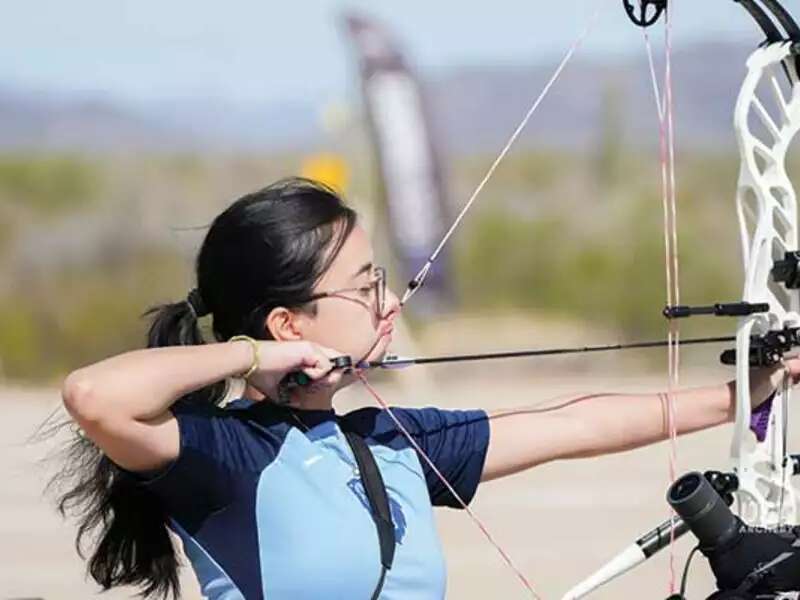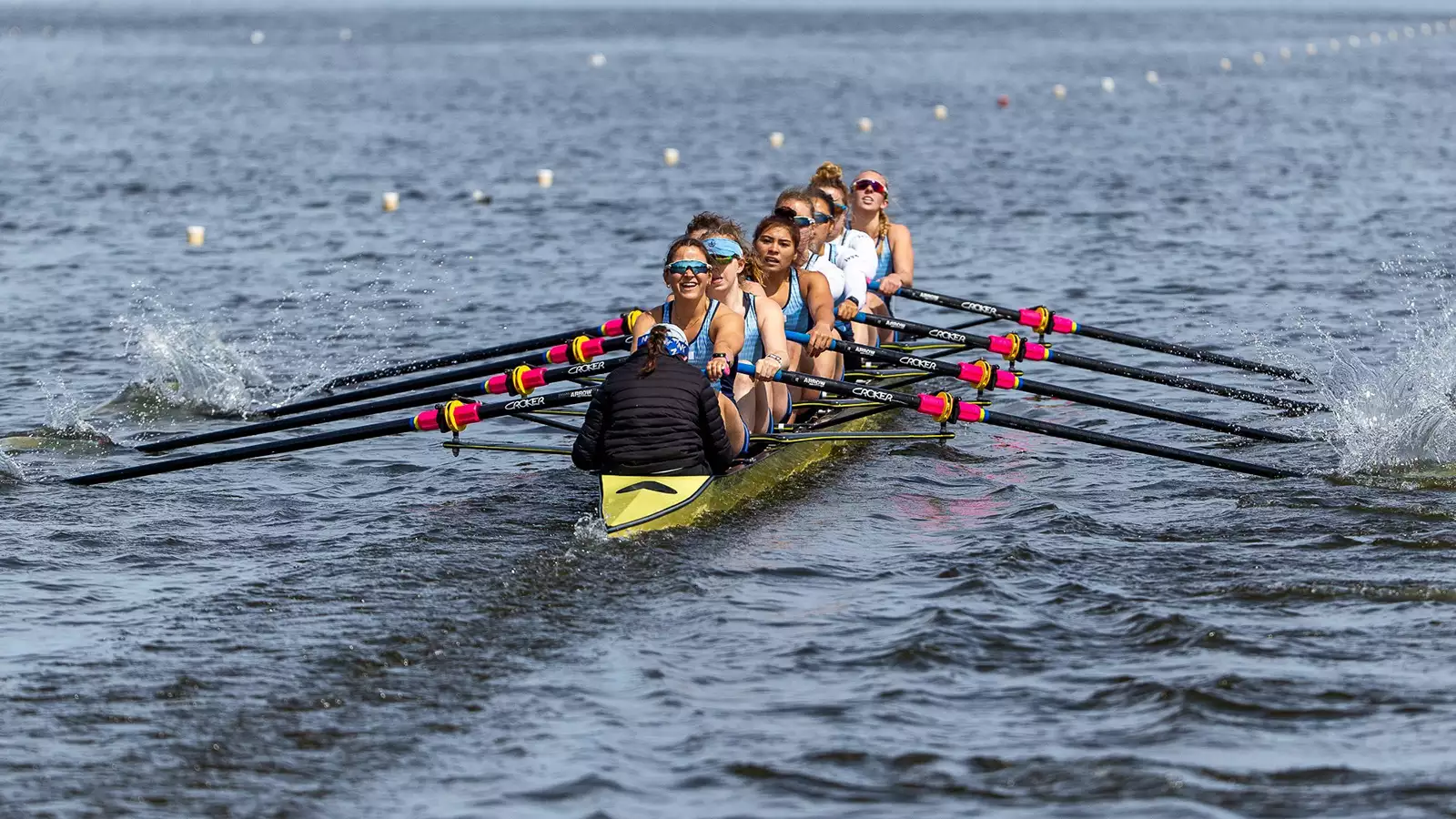
This March, Barnard players delivered standout performances in fencing, squash, archery, and women’s basketball

Shortly after Maggie Storino ’02 started her senior year as captain of the women’s crew team, the tragic events of 9/11 occurred. At the time of the attacks, she was, as usual, at practice at the opposite end of the island of Manhattan in a bucolic setting. As few of the athletes had cell phones, Storino gathered the phone numbers of her teammates’ parents so that her mom could call to tell them that their kids were okay and sheltering at the boathouse.
“You saw these big battleships … come to the Hudson; they came down the Harlem [River]. … We were sitting there, and they all came through. I mean, it was kind of wild,” she recalls.
Her first thought was supporting her teammates, most of whom had different connections to the city. “You were there to support your friends no matter what was going on in your life,” she says. “And that has continued to this day.”
More than two decades later, her inner circle is still composed of those boatmates. Over the years, the women she rowed with have excelled in the fields of architecture, tech, finance, and law. Storino says that rowing was key to their success, in part because the sport forces one to set aside self-interest and focus on a common goal.
“It’s so corny, but [it’s] the idea that all ships rise together,” she says. “My success is my friend’s success. So seeing that and approaching life in that way has allowed me to make mistakes and feel comfortable making mistakes.”
About a hundred blocks north of Barnard’s campus, at the Baker Athletics Complex, is the Columbia Boat House, a 19th-century structure that was moved from 116th Street and the Hudson River to its current home in 1989. The building, which sits next to its modernized 21st-century sibling, boasts a room with paneled walls carved with the names of the men’s heavyweight rowing teams dating back to 1883. It wasn’t until a century later, when Columbia went coed, that women began rowing on the team. Barnard women have been part of that newfound tradition ever since, thanks to the Columbia-Barnard Athletic Consortium. The bonds they form are, to them, every bit as permanent as letters carved in wood.
The “new” location is far better situated in New York’s estuary. The mile-wide Hudson can often get as choppy as the Atlantic, not an ideal spot for sculling. That’s not to say that the top of Manhattan, where the Harlem River meets the mighty Hudson, is a cakewalk. It’s home to Spuyten Duyvil, which roughly translates to “spinning devil” in Dutch, named for the whirlpools that form when the two rivers meet. The team usually avoids that area, opting to hook sharp right off the dock and head to practice on the Harlem. It’s into this incongruent bit of nature amid dense urban sprawl that Bailey Griswold ’12 got into a boat for the first time. As a “walk on,” she was not recruited and not exactly experienced or prepared. But she was part of the team.
“You think of the city, and you think of concrete, steel, and buildings, and then you’re in Inwood on the Harlem River,” Griswold says of her first visit to the boathouse. “It’s so picturesque, and you’re in nature. And you’re like, ‘What? I’m in New York City? What am I doing floating down this river?’”
The Lions compete at Overpeck County Park in New Jersey — a far cry from the turbulent salt waters they train on. Griswold recalled pushing off the dock as strong tides pulled rowers south down the Harlem.
“The worst is when you go out with the tide, because you’re going to shoot out so far, and then you’re like, ‘Ooookay, now we have to turn around and then go back’ — and it’s gonna take twice as long because you run against that tide.”
Unlike teams that practice on fresh lake water, the Lions have to wash saltwater off the boats and equipment lest corrosion set in. It is their last push before heading back downtown for morning classes.
Teams build camaraderie, but the 5 a.m. call brews another kind of bond, says Griswold’s former teammate and current close friend Sylvie Krekow ’13.
“Other teams might also have had early practice schedules, but with rowing, you want to get up early in the morning because the water is typically the best early. It’s the flattest; it’s when the wind is the weakest,” she says. “We had practice Monday through Saturday, 7 a.m., every morning. Because our practice is off campus, we had to all show up at a bus and then go up to the boathouse and then get in a boat and row on the Harlem River, which is inhospitable. It’s pretty brutal.”
The shared conditions create a “hardcore” bond, she says, and winter practice adds another layer of mental tedium. As it’s too cold to be on the water, hours must be spent on the rowing machine without a view, which requires concentration and stamina.
“I think the only way that I got through that is by having a group of girls who were my friends who I could go with, to row next to, listen to music with, get it done, and then all get a nice big breakfast afterwards,” she says.
Another distinction from other sports is synchronicity. If the teammates aren’t in sync, you simply flip the boat, she says.
“There’s one person in the front, the stroke, who’s setting the pace, and then you have to be super in tune and aware of exactly how the girl in front of you is moving, when her back starts moving forward, when her legs go up,” she says. “You develop this rhythm with each other. I can tell, even though I’m behind this person and I can’t see their face, [that] they’re pulling really hard right now or they’re starting to rush and I need to pick it up.”
That’s not to say the teammates are without competition. There are first, second, and third varsity boats, and teammates strive to be in the first boat. But, unlike basketball or softball, no one on the crew gets benched, she says.
Beyond the boat, later in life, she says, the experience translates to work and beyond.
“When you gather your people together and you’re in your boat, [and] you put your head down [and row], you can get through almost anything,” she says. “That is definitely something that I learned from rowing in college.”
Natalie Rutherford ’13 concurs with Griswold and Krekow. Like her dear friends and former teammates, Rutherford says the lessons she learned on the river she now uses in life and work.
“I think rowing is like a lot of discipline, obviously, like being on time,” she says. “But the biggest thing with rowing for me is that you can’t be a good rower if you blame other people in the boat. All that you can control in rowing is your own movements.”
She says if you show poor sportsmanship, you probably won’t last.
“I think that’s my favorite lesson of rowing. … It’s like everybody in the boat has to be kind of selfless in that way.”